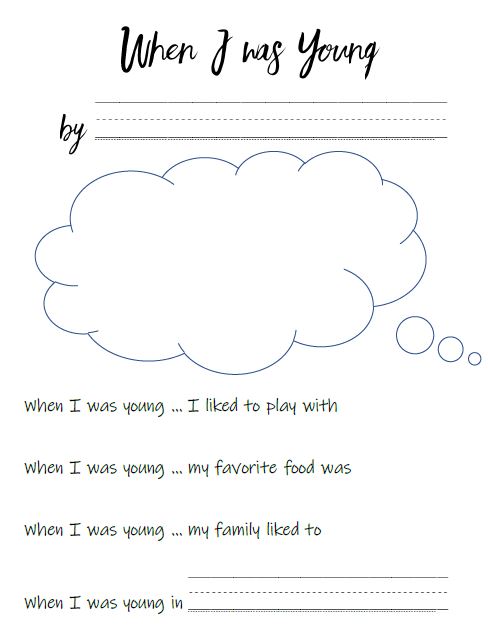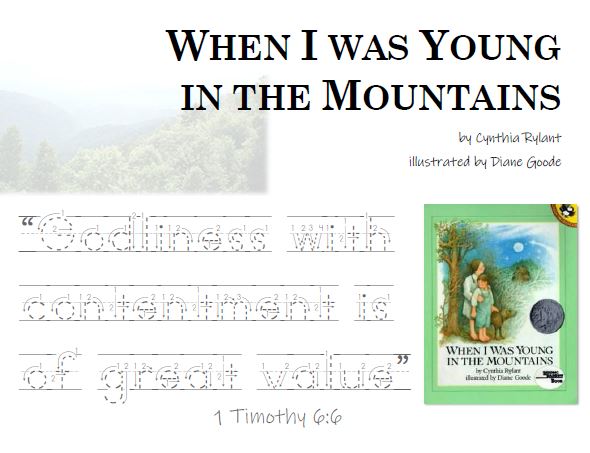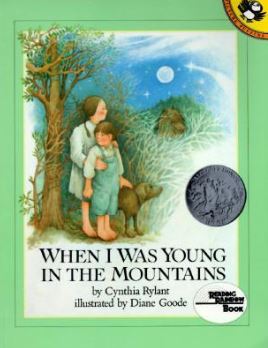If you’ve stumbled here from Pinterest, or some other site … welcome! While each of these books/lessons can stand alone, they are also a part of a year-long series that we have taught at our homeschool co-op. Each lesson builds in part on the one before. Some stories also have similar themes with the books that go before/after them. If you are interested in more information, or to see the complete booklist, check out our main page, More FIAR – Inspired Literature-Based Lesson Plans, especially for homeschool and homeschool co-ops. Thanks for looking around, and welcome to the site!
When I Was Young in the Mountains
- When I was Young in the Mountains Book
- When I was Young in the Mountains Handwriting Sheet (printable version here)
- When I was young (fill in the blank) sheet (printable version here)
- Large map of the USA clearly showing the Appalachian Region
- Appalachian items collected from your house for show and tell. We also asked the class to each bring in a thing or a picture of a thing that represented Appalachian culture to them. (we were able to gather coal, seeds, quilts, old-fashioned tools, mason jars, water pitcher and bowl, oil lamps, candles, etc.)
Review:
The review is never meant to be a big deal or take any more than a couple minutes. The main idea is to help them learn these concepts through repetition, and to get them talking about something they feel comfortable with so that they will feel more relaxed and eager to participate in the class. You can take as long or short as you want to do this, but I usually keep it short and fun.
- Who can tell me one Onomatopoeia word?
- Who can tell me what there favorite book so far has been? Why?
- Who remembers what the setting is?
Introduce the Story:
Our book today, and the next three books we are reading all take place in the mountains, about 100 years ago. So the setting for our book today is the mountains, and specifically, the Appalachian Mountains.
Lets take out our map. If you can use a big map for this class, that would be best, but any map that clearly shows the Appalachians and the cities around them will make the point.
- Has anyone been to a mountain before? Maybe you’ve driven through one or climbed up one?
- What is different about living in the mountains compared to living in the city?
- if you’re following along book-by-book, take a moment to remind that last week, we talked about how New York was a big city because it was right along the Hudson River and it made it very easy for ships to travel through and food and supplies to move in and out. but the mountains are completely the opposite. They’re up high. Not a lot of roads that lead into the mountains. Hard to get supplies up there. Hard to run clean water pipes up there. Hard to get gas and food up there. Everything is harder to get there. More things have to be done by hand.
- point out the cities on either sides of the mountain, often along rivers. then point out where the mountains run, hard to get supplies around there, so usually no big cities.
Make a chart on the board showing side by side city / mountain comparisons.
Take another look at your USA Map together,
- Point out the long stretch of mountains that runs from Maine to Georgia.
- Point out cities on either side. But hard to get to places I’m the mountains.
- Last places to get electricity, running water, … today, cell phone service, internet. Roads are narrow, sometimes no roads. Hard to get food or supplies moved in and out. Everything harder.
Read the story:
Take a moment to emphasize this beautiful theme. Do these mountain kids have the same luxuries we have? Do they have to work harder? Yes. Are they happy and content? Many of them think they’re better off than we are, because we aren’t always hard workers. Or know how to work the land like they do. Or take care of animals like they do.
After the Story – Appalachian Show and Tell
After the Story – Language Arts
What were things like when they were young (Granted, they are pretty young still 🙂 … so they could do now as well. When I formatted this handout, I left spaces to draw pictures as well for those who aren’t quite writing yet.
 |
| Click here for printable version |
Check out this great recording of the book here:
Handwriting Sheet
 |
| Click here for printable version |




